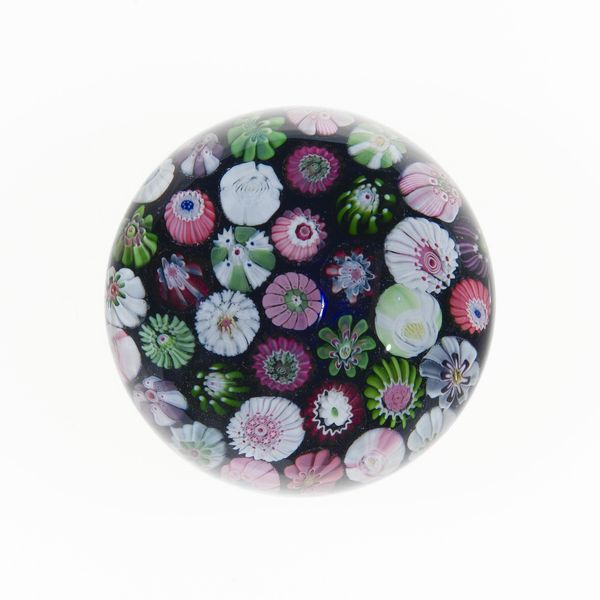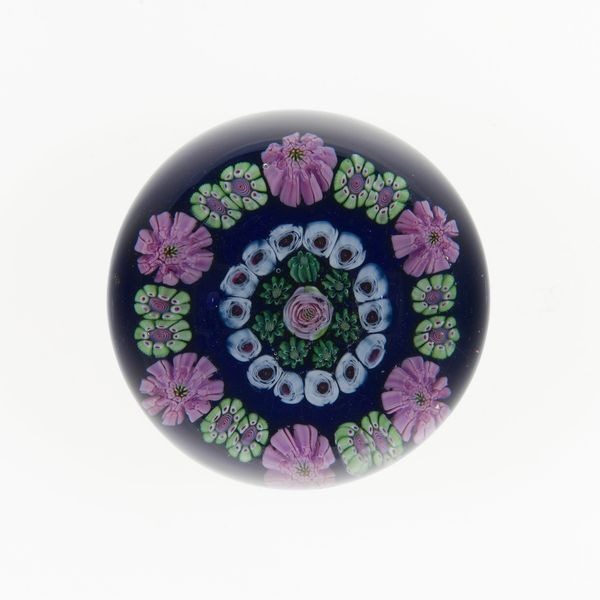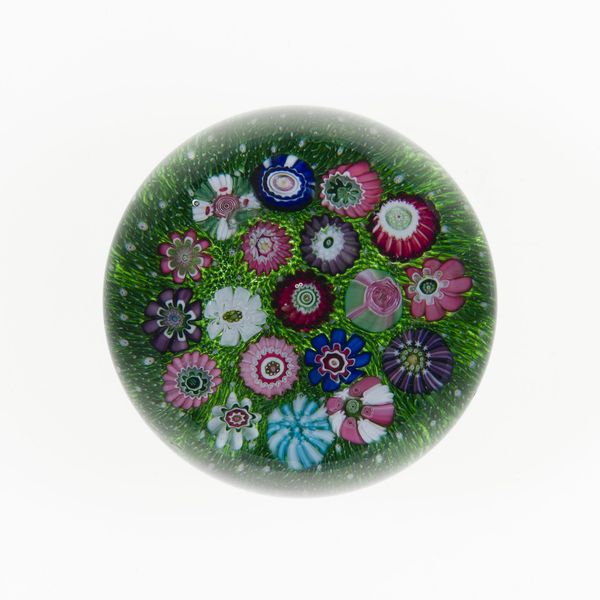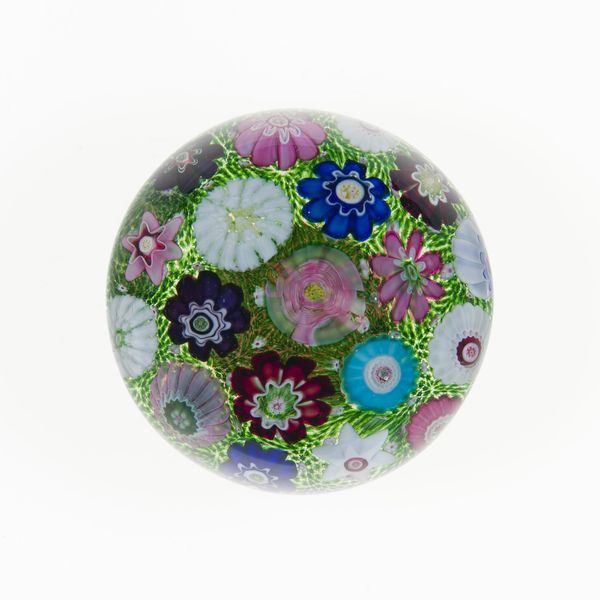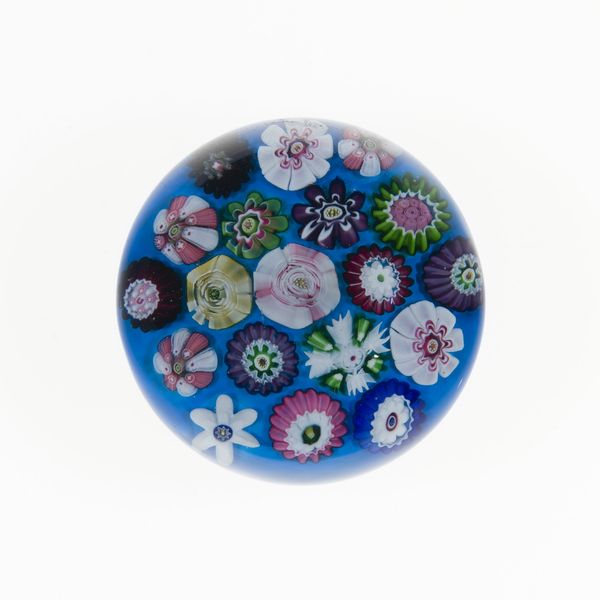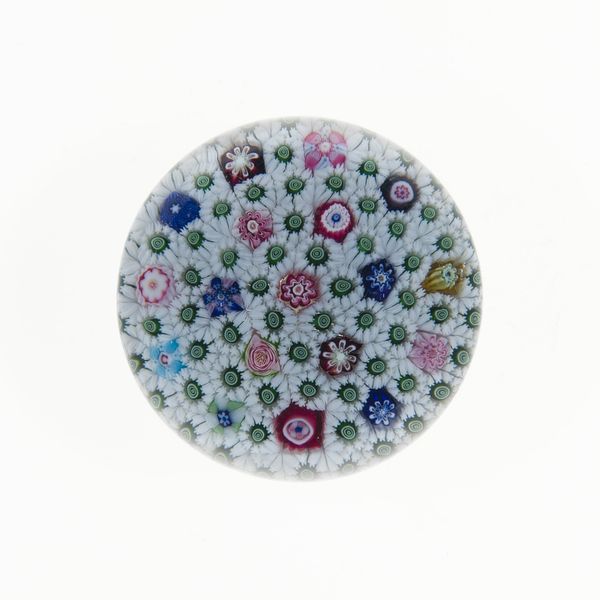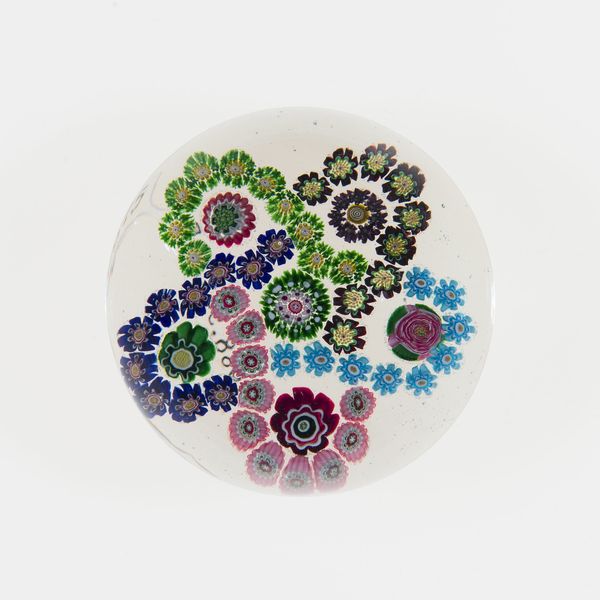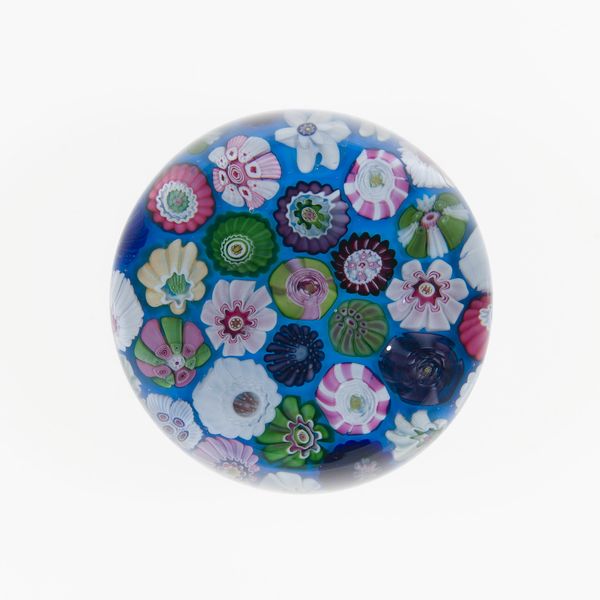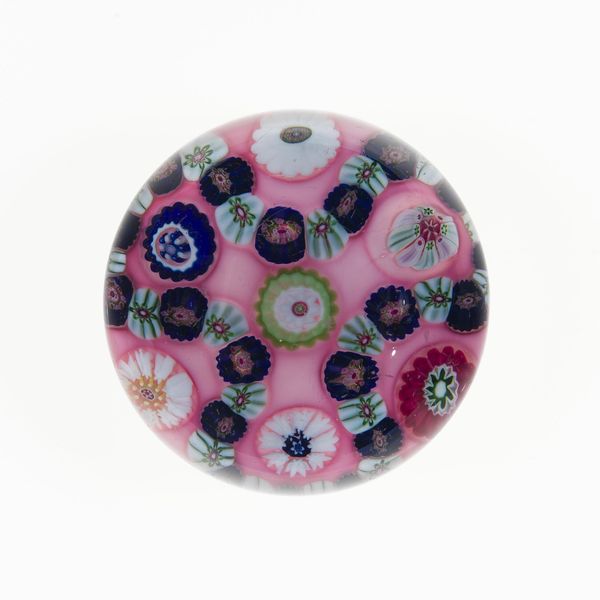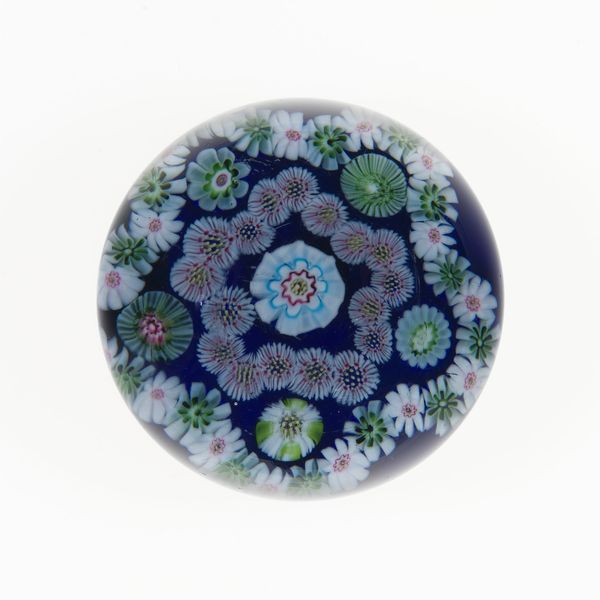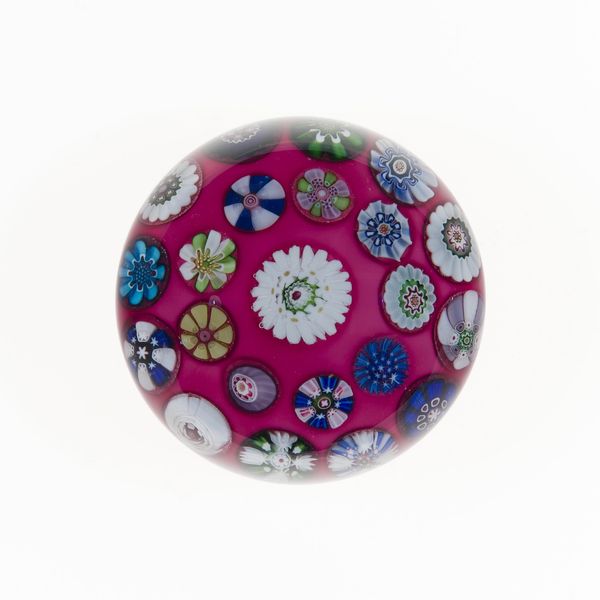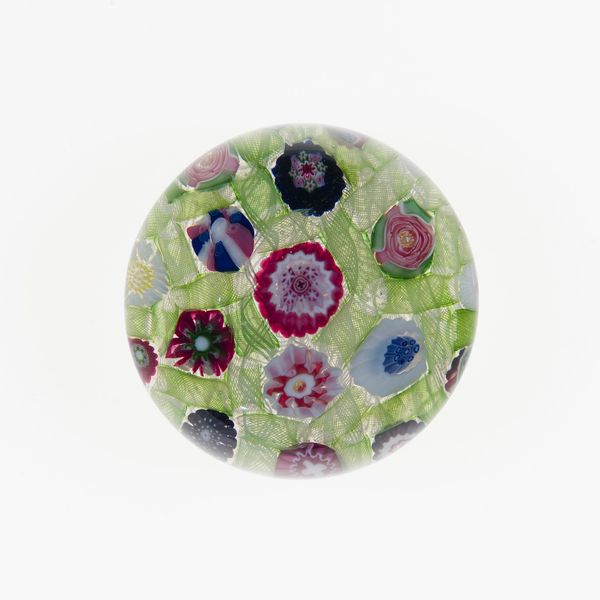
Dimensions: Diameter: 2 3/4 in.
Copyright: Public Domain
Curator: Looking at this "Paperweight" created by Clichy Glasshouse, dating back to the 19th century and held at The Art Institute of Chicago, what immediately captures your attention? Editor: There's a sense of contained beauty. All those meticulously crafted glass flowers, each a perfect little world, held within that smooth, dark sphere. It evokes both wonder and, perhaps, a touch of melancholic reflection. Curator: Melancholy? That’s interesting. My thoughts go toward the complex sociopolitical dimensions of ornamental artworks in the 19th century. Consider the opulence, the leisure, the labor conditions… The Victorians especially loved these objects, which symbolize social class and how far they had climbed. It's more than just aesthetic, don't you think? Editor: Well, on its surface, I perceive how light plays with form. The meticulous arrangement of millefiori—those tiny glass rods—creates a visual dance that is rather seductive. The dark background serves as a kind of abyss, heightening the vibrant colors. Curator: Those floral patterns, especially, are not simply decorative, though, but expressions of class identity. While some argue such artworks embody refined taste, the labor conditions of many factory workers who manufactured them are harsh realities, and that has a history behind it that involves inequality and suppression. It makes me wonder whose taste really benefits here. Editor: Fair point. But the formalism lies not only in surface level enjoyment. The enclosed form creates its own sort of logic, its own structural world. You could argue that this ordered microcosm attempts to rationalize, to make understandable—dare I say, manageable—the often overwhelming natural world outside its clear boundary. Curator: I agree there is a level of ordering here, but perhaps what this artwork needs from us now is a disruption of that sense of "order". By acknowledging its historical setting and associations with social stratification, we recognize it reflects an unjust past that has to be accounted for, rather than simply celebrated for its optical and physical appeal. Editor: In the end, maybe it's the combination of that historical consciousness alongside a continued attention to composition and material— the intersection of context and form—that ultimately breathes renewed life into it. Curator: I couldn’t have put it better myself. To look beyond the aesthetic qualities of an artwork means also to explore its past.
Comments
No comments
Be the first to comment and join the conversation on the ultimate creative platform.
